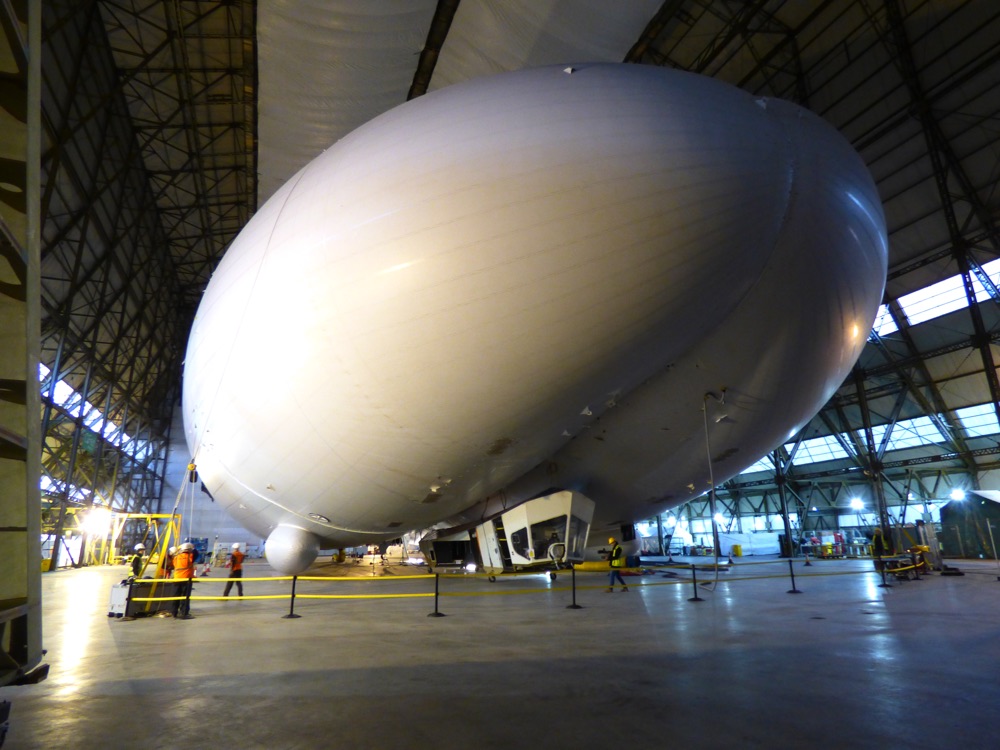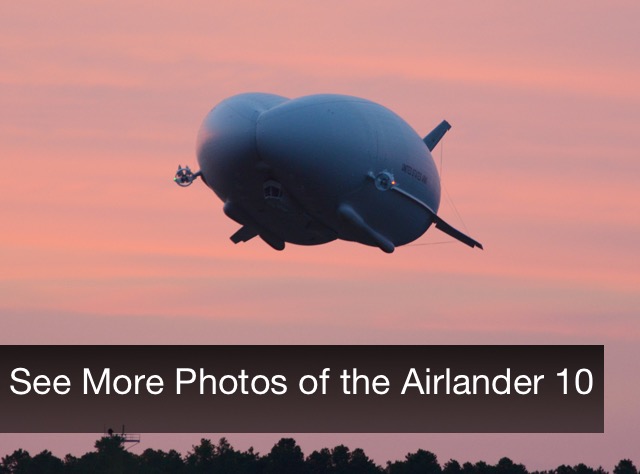World's Largest Aircraft Readies for Takeoff

The world's largest aircraft, some 65 feet (20 meters) longer than the world's biggest passenger airliner, is just about ready to leave its hangar near London and take to the skies.
At 302 feet (92 meters) long, the hybrid Airlander 10 — which mixes tech from airplanes, helicopters and airships — even dwarfs the largest passenger airliner, the Airbus A380 (also called the Superjumbo), and boasts a weight of 44,100 lbs. (20,000 kilograms), according to its maker, Hybrid Air Vehicles in Cardington, England.
In addition to its gargantuan size, the prototype hybrid vehicle (which looks like a massive blimp) has endurance on its side: The Airlander 10 is designed to reach altitudes of up to 20,000 feet (6,100 m) and stay aloft for five days when manned and up to two weeks when unmanned. [Huge Airship: See Photos of the Building of the Airlander 10]
The aerodynamic shape of the helium-filled hull provides 40 percent of the hefty vehicle's lift, according to company officials. Air-filled bags called ballonets in the hull can be inflated or deflated to change the craft's altitude. In addition to remaining buoyant, the Airlander will be able to cruise through the air at up to 91 mph (148 km/h), propelled by its four 350-horsepower, V8 diesel engines, said Hybrid Air Vehicles.

In the latest developments, engineers attached a series of parts to the Airlander's hull, including a massive lower port fin that had to be lifted up by a crane and four turbocharged diesel engines. The payload module, where passengers or cargo will sit, was also fitted beneath the hull and behind the cockpit.
"It's really quite a special machine to fly," said test pilot David Burns, as reported by CNN. "The view from the flight deck is excellent because of the large windows and the airship characteristics, flying at a fairly lowish altitude."
The Airlander 10 could be used for diverse missions, its functionality resting on two qualities: "It can stay in the air for days and even weeks carrying a lot of weight on an ultra-stable platform," Chris Daniels, head of partnerships and communication at Hybrid Air Vehicles. "And it also has the versatility to land and take off from pretty much any surface, including water, carrying up to 10 tonnes [about 22,000 lbs.] of cargo."
Sign up for the Live Science daily newsletter now
Get the world’s most fascinating discoveries delivered straight to your inbox.
With its "ultra-stable platform," the Airlander 10 could be used for search and rescue, patrol and surveying. "This may be coastguard duties, academic research or perhaps a Wi-Fi platform for rock festivals," Daniels told Live Science in an email. "The second use is either passenger flight (think safaris and luxury tourism) or for cargo to remote regions where there aren't good roads or railways, or perhaps an airport doesn't exist."
Before reaching its lofty goals and offering rides to commercial passengers, the Airlander, which reportedly cost $35 million to produce, will complete ground tests and then 200 hours of test flights, according to CNN.
Editor's Note: This article was updated with additional information on how the Airlander 10 will be used.
Follow us @livescience, Facebook & Google+. Original article on Live Science.
Jeanna Bryner is managing editor of Scientific American. Previously she was editor in chief of Live Science and, prior to that, an editor at Scholastic's Science World magazine. Bryner has an English degree from Salisbury University, a master's degree in biogeochemistry and environmental sciences from the University of Maryland and a graduate science journalism degree from New York University. She has worked as a biologist in Florida, where she monitored wetlands and did field surveys for endangered species, including the gorgeous Florida Scrub Jay. She also received an ocean sciences journalism fellowship from the Woods Hole Oceanographic Institution. She is a firm believer that science is for everyone and that just about everything can be viewed through the lens of science.
Get a closer look at wildlife for less: This huge $60 saving on the Bushnell 10x42mm Trophy XLT binoculars — now down to their lowest-ever price at Adorama
Acer Aspire Vero 16 review: Admirably eco-conscious
Killer Australian fungus can gobble up widespread, pesticide-resistant armyworm from the inside










